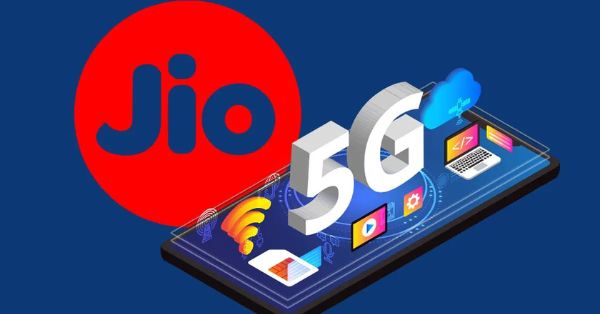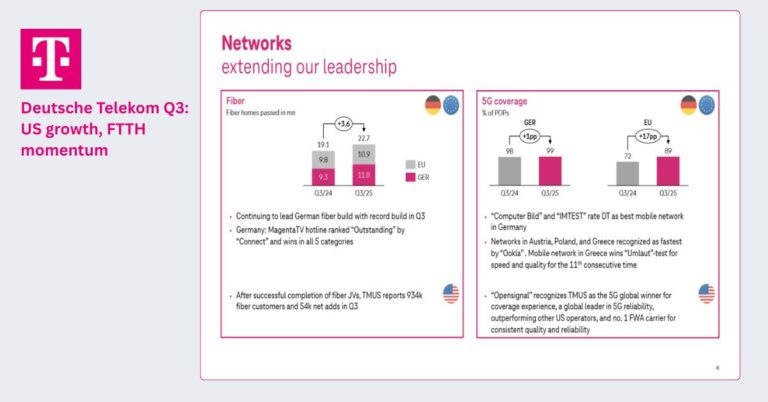1. Booz Allen, Ericsson, and Nokia partner to focus on modernizing U.S. Navy communications with 5G lab and POC efforts
What is the significance of Booz Allen’s partnership with Ericsson and Nokia for the US Navy?
The partnership between Booz Allen Hamilton, Ericsson, and Nokia to modernize the US Navy’s communication systems through 5G technology represents a pivotal shift towards enhancing national security and operational efficiency. This collaboration signifies the Navy’s commitment to leveraging cutting-edge technology to maintain a strategic advantage. By incorporating 5G labs and proof-of-concept efforts, the initiative aims to explore and implement high-speed, reliable, and secure communications solutions capable of supporting a wide range of naval operations, from routine communications to critical battle management systems.
The significance of this partnership also lies in the adoption of open RAN technology, which marks a departure from traditional, proprietary solutions toward a more open, interoperable, and flexible network infrastructure. This shift is expected to lower costs, foster innovation, and reduce dependency on single vendors, thereby enhancing the Navy’s ability to adapt to evolving technological and security challenges. Moreover, the involvement of two leading telecom companies, Ericsson and Nokia, brings a wealth of experience and expertise in 5G technology, further ensuring the success and reliability of the project.
How does network slicing benefit the US Navy, and what role does open RAN play in this context?
Network slicing stands out as a transformative feature of 5G technology, offering the ability to create multiple virtual networks with distinct characteristics over a common physical infrastructure. For the US Navy, this capability is invaluable. It enables the creation of dedicated slices for different operational needs, each optimized for specific requirements such as low latency, high bandwidth, or enhanced security. This means that critical mission operations can rely on a network slice with ultra-reliable low-latency communication (URLLC), while less critical administrative tasks can use a more standard set of parameters. The result is a highly efficient and flexible communication system that can adapt to the diverse needs of naval operations, improving response times and operational effectiveness.
Open RAN plays a crucial role in this context by providing the architectural flexibility necessary to implement network slicing effectively. By decoupling hardware from software and enabling the use of equipment from different vendors, open RAN facilitates the customization and scalability of the network to meet the specific demands of each slice. This not only accelerates the deployment of new services and capabilities but also enhances the Navy’s ability to incorporate future technological advancements. Open RAN thus acts as a catalyst for innovation, enabling the Navy to leverage network slicing to its fullest potential and ensuring that its communication systems remain at the forefront of technology.
2. Tesla wants to deploy Private 5G, could this spur other automakers to do the same?
What are Tesla’s plans for deploying private 5G networks, and how might this impact automotive manufacturing?
Tesla’s initiative to deploy private 5G networks is a strategic move that underscores the company’s commitment to innovation and operational excellence. By exploring the development of a private 5G protocol stack, Tesla aims to create a robust, high-speed wireless communication framework within its premises. This framework is not just about enhancing connectivity; it’s about laying the groundwork for a fully integrated, smart manufacturing environment. The deployment of private 5G networks is expected to have a profound impact on automotive manufacturing, offering several key benefits:
- Enhanced Automation and Efficiency: With 5G’s low latency and high reliability, Tesla can further automate its manufacturing processes, enabling real-time control and synchronization of manufacturing robots and equipment. This can lead to increased production speeds, reduced downtime, and higher overall efficiency.
- Improved Quality Control: The high data rates supported by 5G make it feasible to implement advanced quality control mechanisms, such as real-time video surveillance and AI-based analysis. This can help in early detection of manufacturing defects, ensuring higher quality products.
- Flexibility and Scalability: Private 5G networks can be customized to the specific needs of Tesla’s manufacturing facilities, providing the flexibility to adapt to changing demands and technologies. Moreover, the scalability of 5G networks means Tesla can easily expand its network as the company grows, without significant additional investment.
- Enhanced Security: By deploying its own private 5G networks, Tesla can ensure a higher level of security, protecting sensitive data and proprietary technologies from potential cyber threats. This is crucial for maintaining competitive advantage and customer trust.
How does the integration of private 5G networks contribute to Tesla’s operational efficiency and innovation?
The integration of private 5G networks into Tesla’s operations is set to be a game-changer, contributing significantly to both operational efficiency and innovation in several ways:
- Seamless Connectivity: Private 5G networks provide pervasive, high-speed connectivity that can facilitate seamless communication between various components of Tesla’s operations, from the manufacturing floor to the supply chain. This can lead to smoother operations and faster decision-making.
- Support for IoT and Edge Computing: 5G’s capability to support a massive number of IoT devices simultaneously opens up new avenues for Tesla to implement IoT solutions for monitoring and optimization. Combined with edge computing, this can lead to smarter manufacturing processes with predictive maintenance, energy management, and enhanced safety protocols.
- Data-Driven Insights: The high data throughput of 5G networks enables the collection and analysis of vast amounts of data from across Tesla’s operations. This can provide deep insights into production efficiency, product quality, and customer preferences, driving continuous improvement and innovation.
- Future-Ready Infrastructure: By building its network infrastructure around 5G, Tesla is positioning itself to be at the forefront of emerging technologies such as autonomous vehicles, augmented reality (AR) for training and maintenance, and advanced robotics. This future-ready infrastructure ensures that Tesla remains a leader in automotive innovation.
The initiative to deploy private 5G networks reflects Tesla’s forward-thinking approach to manufacturing and operations, promising to enhance efficiency, drive innovation, and maintain its leadership in the automotive industry.
3. AT&T announces 5G powered Internet Air for Business and partners with Microsoft Teams for 5G & AI-infused unified communications solution
AT&T’s “Internet Air for Business” initiative represents a strategic move to tap into the burgeoning demand for flexible and reliable business connectivity solutions, leveraging 5G technology’s unique attributes. This service is particularly aimed at empowering small to medium-sized businesses (SMBs) with the ability to deploy high-speed internet connections rapidly, without the constraints of traditional wired infrastructure. The significance of this offering lies in its potential to democratize access to enterprise-grade internet connectivity, thus enabling SMBs to compete more effectively in the digital arena.
The collaboration between AT&T and Microsoft to enhance unified communications with 5G and AI technologies through Microsoft Teams could revolutionize how businesses communicate internally and with customers. By infusing AI, this partnership promises to deliver smarter, more contextual communication experiences, such as real-time language translation, automated meeting notes, and enhanced security features. The integration with 5G opens up possibilities for more immersive remote collaboration experiences, including high-definition video conferencing and augmented reality (AR) interactions, without the latency issues that can hamper productivity and engagement.
4. China Mobile plans to roll out 5G-Advanced to 300 cities across China in 2024, starting with an initial 100 cities
China Mobile’s ambitious rollout plan for 5G-Advanced across hundreds of cities illustrates China’s aggressive pursuit of technological supremacy in the global telecommunications landscape. The move to 5G-Advanced is expected to unlock new capabilities and applications that could transform industries by enabling ultra-reliable low-latency communications (URLLC), massive machine-type communications (mMTC), and enhanced mobile broadband (eMBB). These advancements could facilitate the emergence of smart cities, autonomous vehicles, telemedicine, and more, significantly impacting the economy and society.
However, the deployment of 5G-Advanced on such a large scale within a short timeframe presents substantial challenges, including technological, regulatory, and infrastructural hurdles. The success of this initiative will depend on a robust ecosystem of compatible devices, a supportive regulatory framework, and extensive collaboration between industry players. Moreover, the transition to 5G-Advanced will require substantial investments in R&D and network infrastructure, highlighting the need for careful planning and execution to realize the full potential of this technology.
5. Keysight and Viavi battle for Spirent to boost 5G design, test, and measurement capabilities
The intense competition between Keysight Technologies and Viavi Solutions to acquire Spirent Communications underscores the critical importance of testing and measurement in the 5G ecosystem. As 5G networks and technologies continue to evolve, the ability to accurately measure and validate performance becomes increasingly vital to ensure reliability, efficiency, and security. The acquisition of Spirent, with its advanced testing solutions, would significantly bolster the capabilities of the acquiring company, providing a competitive edge in the rapidly expanding 5G market.
This acquisition battle also reflects the broader trends in the telecommunications industry towards consolidation and integration of capabilities to offer comprehensive solutions that address the complex challenges of 5G deployment. The winner of this acquisition will not only enhance their product portfolio but also gain access to Spirent’s expertise and customer base, facilitating further innovation and growth in the 5G domain.
4. T-Mobile Secret Baseball Button and Opening Day
T-Mobile’s launch of the “Secret Baseball Button” as part of its opening day celebration exemplifies innovative marketing strategies designed to engage customers on a personal and emotional level. By tapping into the widespread enthusiasm for baseball, T-Mobile not only promotes its MLB partnership and MLB.TV subscription offer but also strengthens its brand identity as fun, customer-focused, and aligned with its customers’ passions. This campaign cleverly leverages the cultural significance of baseball’s opening day to generate buzz and enhance customer loyalty.
Beyond the immediate promotional value, the Secret Baseball Button initiative illustrates the potential for companies to use technology creatively to enhance the customer experience. It serves as a case study in how brands can integrate digital tools and services with real-world events and interests to create unique and memorable customer interactions. As businesses look to differentiate themselves in a crowded market, such inventive campaigns can play a crucial role in building brand affinity and driving customer engagement.










































